Featured Comment
Followed this recipe exactly how he wrote it and it turned out to be AMAZING. It’s a staple in our rotation now! Thank you!
– Jaylene
Like kitsune udon, curry udon, and tempura udon, beef udon noodle soup is a classic that soothes with smoky-sweet broth and soft noodles that warm you instantly.
This version layers onion, soy, and dashi into harmony, recreating the flavors of Japanese noodle shops at home. Want to bring that comfort to your table tonight?
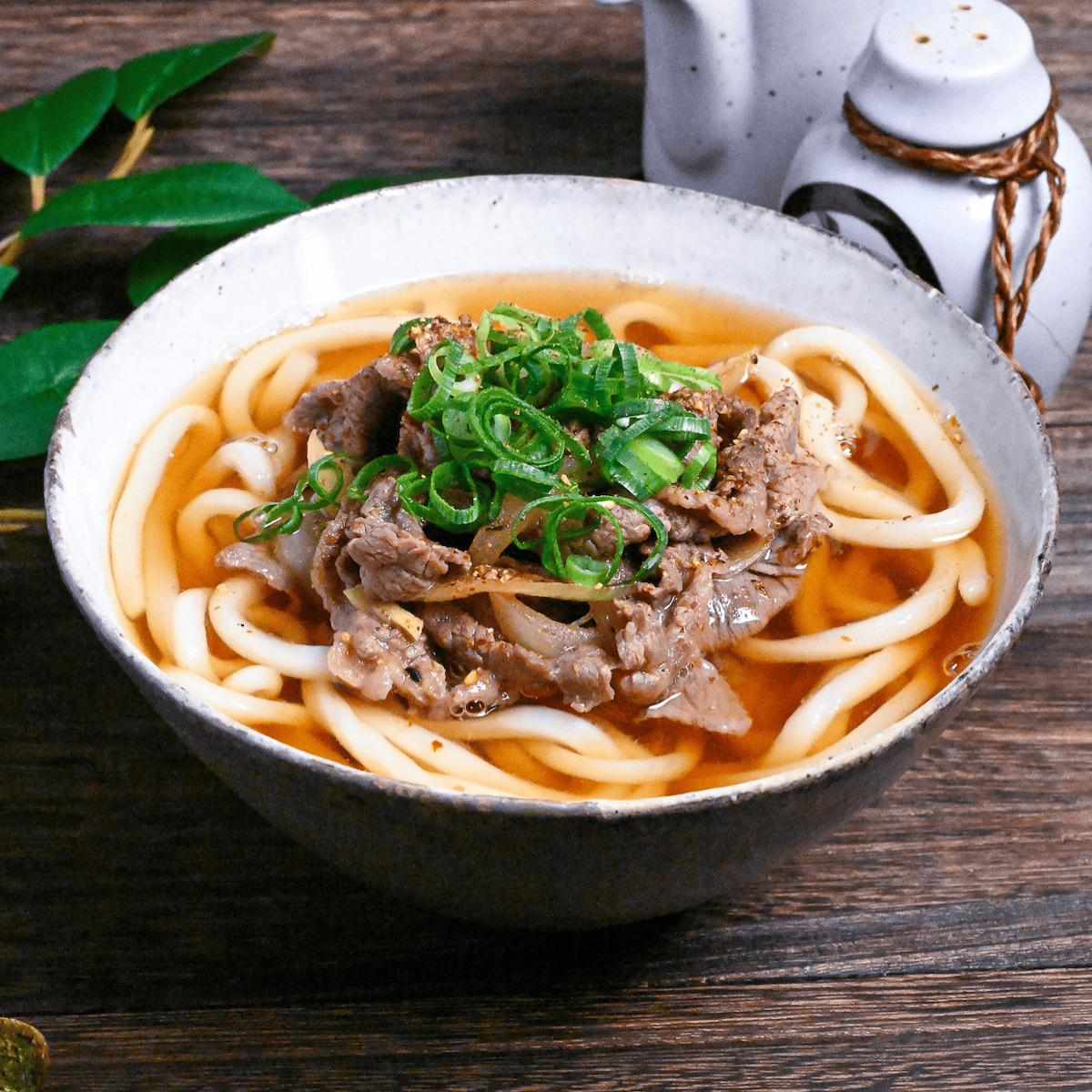
Beef Udon NOodle Soup
Recipe Snapshot
- What is it? Rich, savory beef swimming in golden dashi broth with chewy udon noodles.
- Flavor profile: Savory, Rich, Comforting.
- Why you’ll love this recipe: The marinade step guarantees tender, flavorful beef every time. You’ll finally have a foolproof udon recipe that works consistently.
- Must-haves: Udon noodles, Thinly sliced beef, Dashi stock.
- Skill Level: Easy
- Freezer Friendly? Partially.
- Suitable for Meal Prep? Partially.
Summarize & Save this content on:

What is Niku Udon?
At its heart, niku udon pairs silky udon noodles with a dashi-based broth and soy-simmered meat. Born during Japan’s Meiji period when beef became popular, this dish varies by region: Kansai (West) uses beef (like my recipe), while East sometimes features pork (pork udon noodle soup). I’m from the Tokai (Nagoya) region, and I’m more familiar with using beef.
What matters most? That perfect harmony of textures and the warming, satisfying comfort only dashi can deliver.
Niku Udon Ingredients
What You’ll Need for Udon & Soup

- Udon noodles: Fresh, dried, chilled, or frozen, they all work, but frozen udon is your weeknight hero here. It cooks in just 2-3 minutes, keeps its perfect chewy bounce, and never turns mushy when properly heated. You’ll find it in the freezer section of most Asian markets. If you’re feeling ambitious and want to try making them from scratch, my detailed homemade udon noodles recipe will be a rewarding weekend project.
- Japanese style soy sauce: Either regular dark soy (koikuchi) or lighter soy (usukuchi) will work perfectly for this dish, so just use whichever you have on hand.
- Mirin: If you’re wondering what is mirin and how to use it, it adds incredible sweetness and depth to dishes. Don’t have any? Mix sugar with sake, white wine, or water for a quick mirin substitute.
What You’ll Need for Marinated Beef
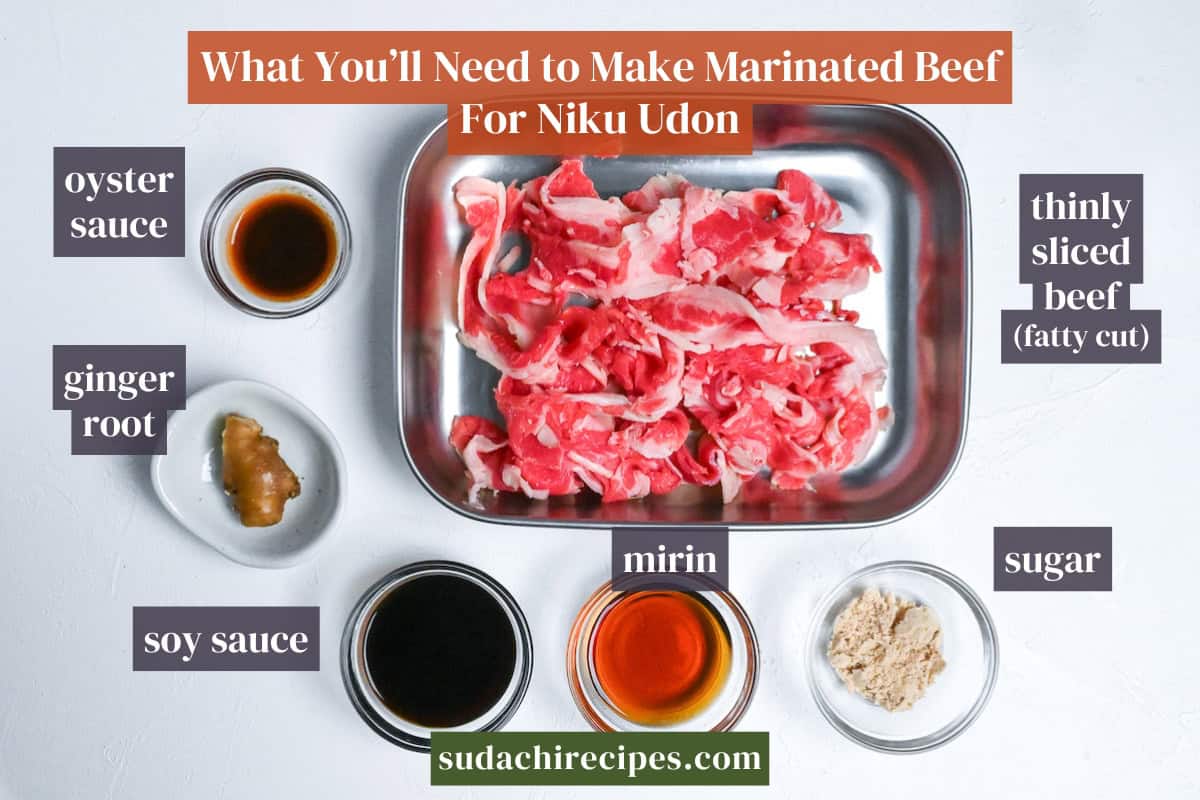
- Thinly sliced beef: Look for cuts labeled “beef for stir-fry” or “shabu-shabu beef” at Asian markets. The key is choosing beef with just the right amount of fat. Too lean and it turns dry, too fatty and the broth can feel heavy. In the US, cuts such as ribeye, top sirloin, and flank are suitable for thin slicing.
- Sugar: I used light brown sugar, but regular white sugar works perfectly fine too.
Substitution Ideas
- Beef alternatives: Thinly sliced pork or chicken thigh work beautifully here. Just make sure to slice the chicken thigh against the grain into thin pieces.
- Homemade dashi stock alternatives: High-quality dashi packets are the best shortcut, giving you clear, umami-rich broth in minutes. Dashi granules work in a pinch too, but just know the flavor leans a little cloudier and more “instant” tasting.
- Plant-based options: Prepped soy-based “meat” slices make a satisfying alternative to beef. For the stock, a good vegan dashi. If you need to replace oyster sauce, a mushroom sauce is a great swap.
Have trouble finding Japanese ingredients? Check out my ultimate guide to Japanese ingredient substitutes!
How to Make My Beef Udon Noodle Soup
If you prefer to watch the process in action, check out my YouTube video of this beef udon noodle soup recipe!
Before you start: Prepare your dashi stock either using my homemade dashi recipe or a dashi packet.
i. Combine thinly sliced beef with soy sauce, mirin, oyster sauce, sugar, grated fresh ginger, and water in a shallow dish. Let this mixture work its magic for at least 10 minutes, or until your dashi is ready-the longer you wait, the more flavor penetrates each slice.
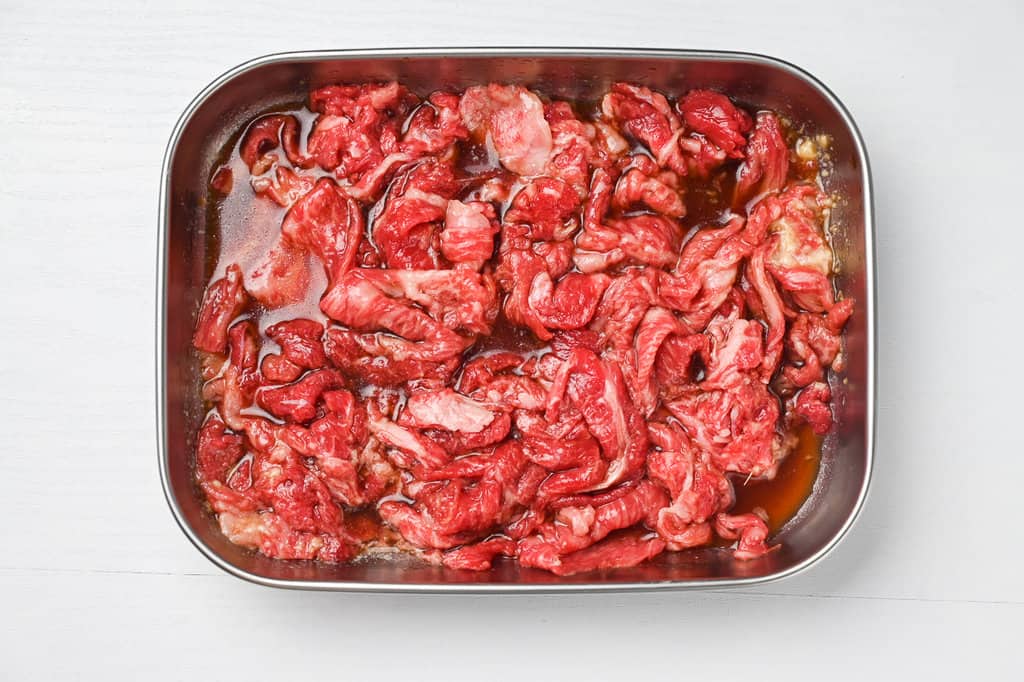
ii. While the beef soaks up those savory notes, slice onion into thin crescents and massage well with salt in a separate bowl.
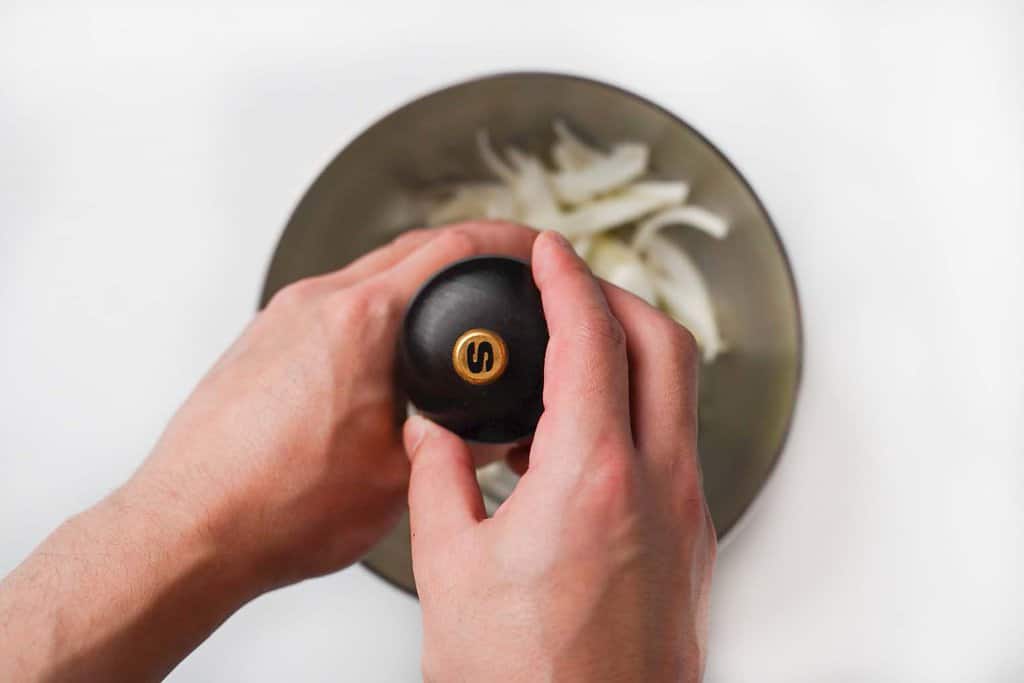
Seasoning the meat up front means you don’t have to simmer it long in broth (which can toughen beef). Ginger also helps tenderize and nudges away any beefy aroma. Translation: beefy-sweet bites that stay tender even with quick cooking.
i. Pour dashi into a pot. Stir in soy sauce, mirin, and sugar. Bring to a brief boil for 2 minutes to evaporate mirin’s alcohol, then turn the heat off but keep the pot on the burner so it stays warm.
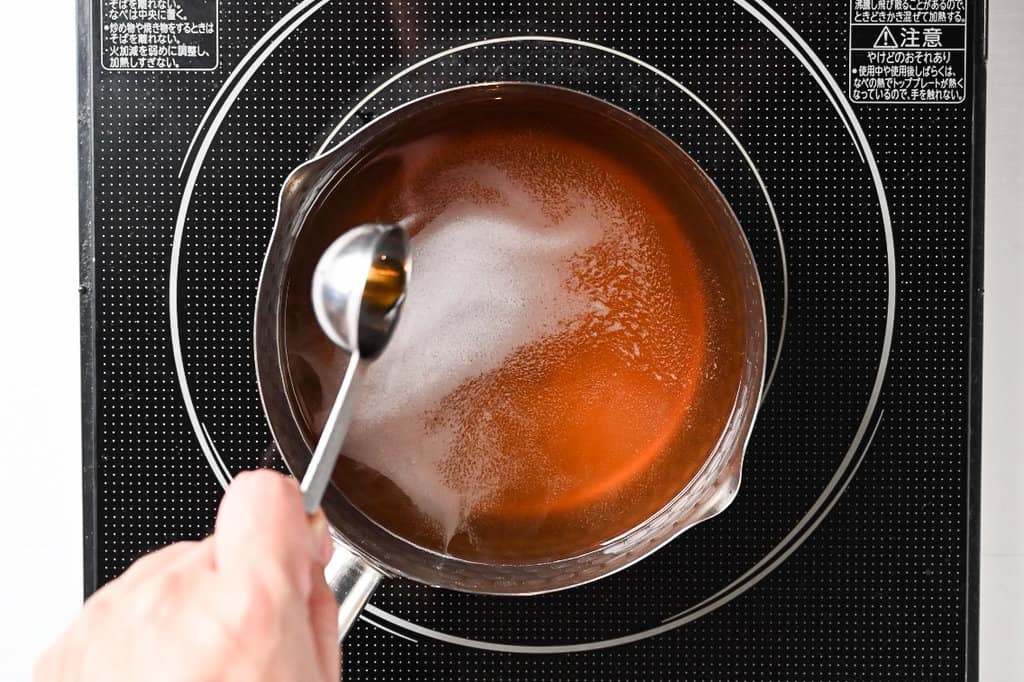
i. Heat a skillet over medium heat. When hot, add beef fat (or neutral oil). Firmly squeeze the salted onions to remove excess moisture, then tumble them into the pan. Cook until translucent and sweet-smelling.
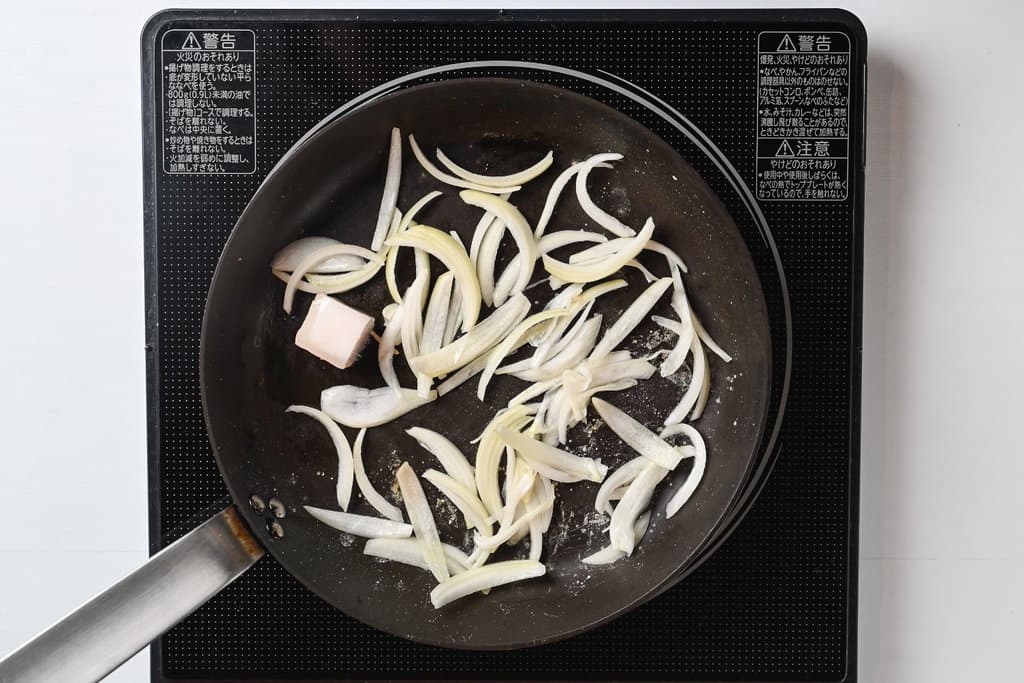
After salting and massaging the onions, moisture should have drawn out. Before adding them to the pan, be sure to squeeze out this liquid along with any excess salt. Otherwise, the onions will end up too salty.
ii. Add the beef with all its marinade and stir-fry until the slices turn from pink to just-cooked and the sauce turns glossy.
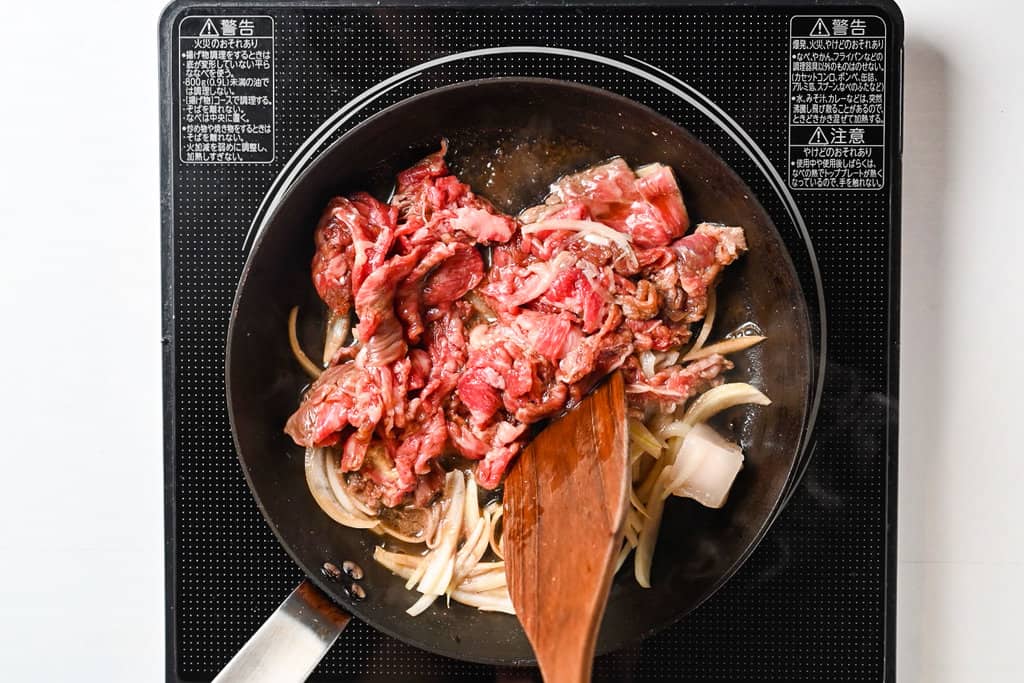
iii. Pull the pan off the heat before the beef tightens.
i. Cook udon according to the package instructions.
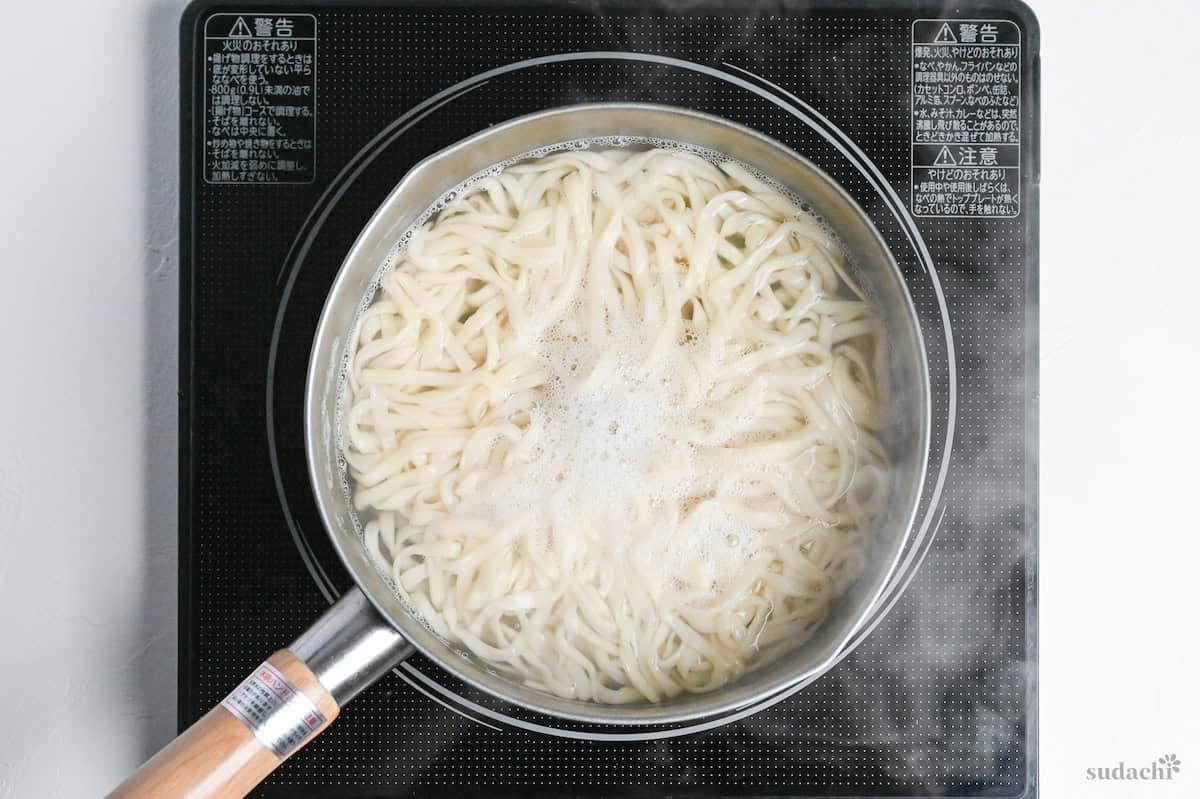
ii. Drain, then rinse briefly with hot water to remove surface starch while keeping the noodles.

iii. Divide noodles between warm bowls.
i. Ladle hot broth into each bowl to about two-thirds full. Mound the beef and onions on top, then spoon over any pan sauce for a savory sheen.
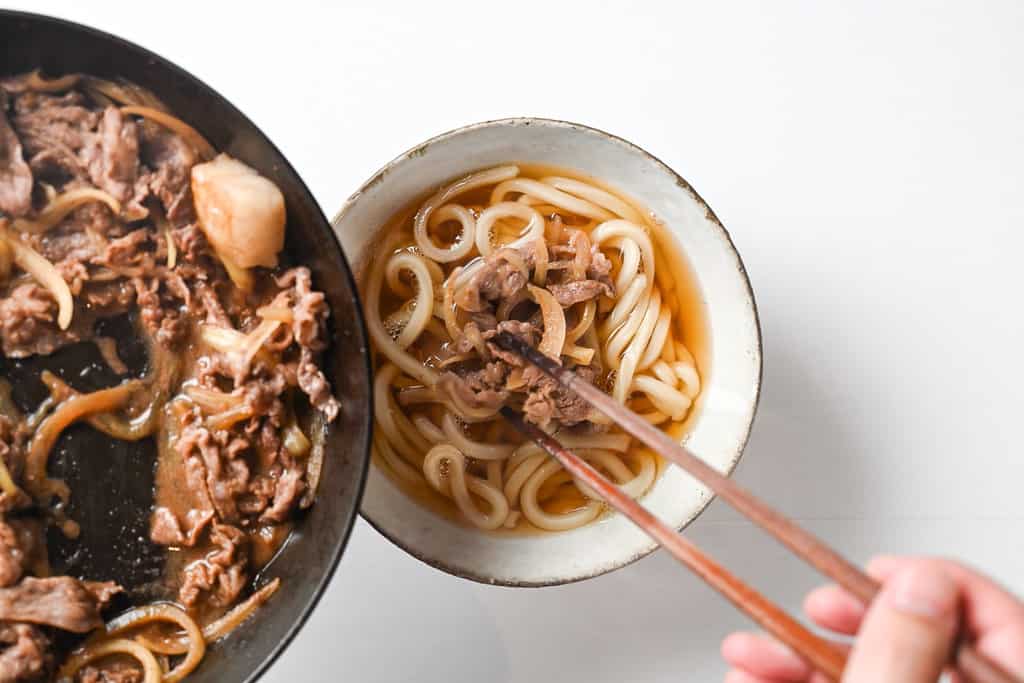
ii. Shower with finely chopped green onions and a pinch of shichimi togarashi (Japanese seven-spice) for warmth.
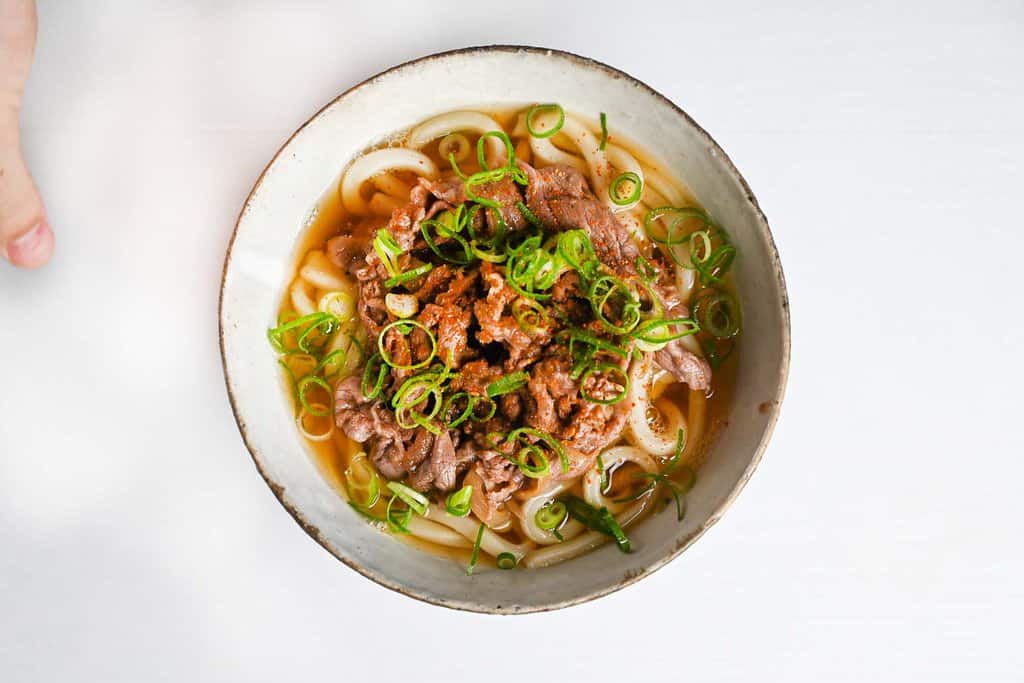
iii. Before your first slurp, give everything a thorough stir with your chopsticks. The marinated beef carries concentrated flavors that need to meld with the milder broth. Think of it as the final seasoning step that brings perfect harmony to every spoonful.
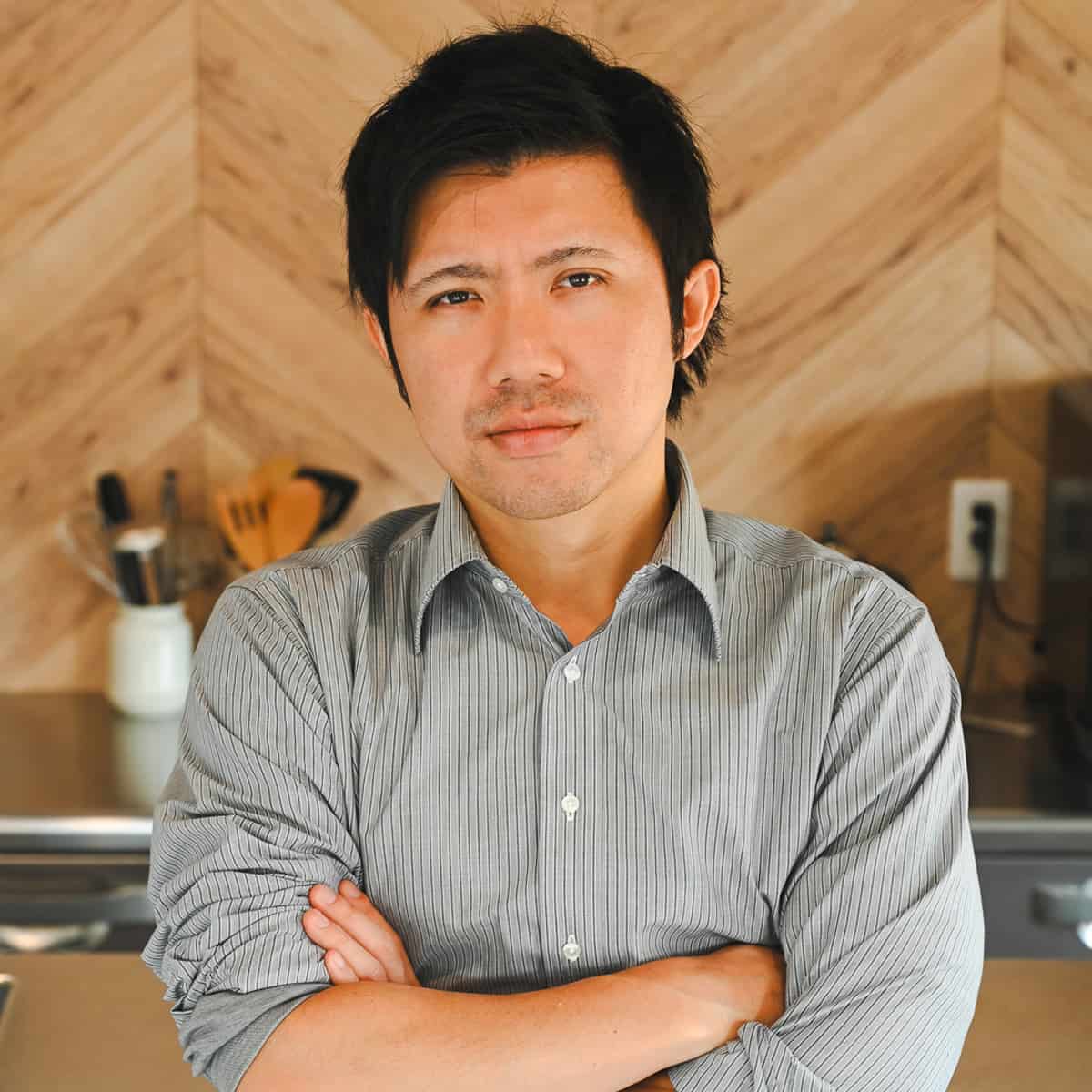
Essential Tips & Tricks
- Stir-fry marinated beef for under 2 minutes until just cooked through.
- In a rush, use instant dashi.
- Mix noodles, broth, and beef before eating to balance the seasoning.
With these simple tips in mind, you’re set for success every time you make beef niku udon.
Storage & Meal Prep
Fridge: Components separated. Marinated beef and onions in airtight container, 2 days. Seasoned dashi in sealed container, 3 days. Storing complete assembled bowls is not recommended.
Freezer: Marinated beef and onions in freezer bags, 2-4 weeks. Complete bowls not recommended.
Meal Prep: Make a double batch of marinated beef and onions, then portion into containers with the cooking liquid. Prepare dashi beforehand. Cook udon fresh when serving, the noodles don’t hold well and become mushy when stored in liquid.
Reheating: Thaw frozen beef mixture in refrigerator overnight. Reheat gently in a pan over medium heat until warmed through. Warm dashi in a saucepan without boiling. Cook fresh udon and assemble as directed.
What to Serve With This Recipe
Beef Udon Q&A
This is the most common mistake with beef udon. Overcooking is the culprit. Boiling the meat too long or reheating repeatedly causes the proteins to tighten. Cook the beef just until it changes color.
For oversalty broth, dilute gradually with fresh dashi or hot water in a separate pot, but never add water directly to the serving bowl. For bland broth, add salt first to adjust saltiness, then soy sauce for flavor depth.
Overcooked udon can’t be salvaged, but you can prevent it by cooking noodles just before serving and rinsing them with water immediately after draining.

More Japanese Udon Recipes
Ready to explore more delicious bowls? Dive into these authentic Japanese udon soup recipes to discover your next comfort food obsession!
Did You Try This Recipe?
I would love to hear your thoughts!
💬 Leave a review and ⭐️ rating in the comments below. 📷 I also love to see your photos – submit them here!

Beef Udon Noodle Soup (Authentic Niku Udon)
Ingredients
Marinating the beef and onions
- 150 g thinly sliced beef or thinly sliced pork
- 1 tbsp Japanese soy sauce (koikuchi shoyu)
- 1 tbsp mirin
- 1 tsp oyster sauce
- ½ tsp light brown sugar
- ½ tsp grated ginger root or ginger paste
- 3 tbsp water
- ¼ onion
- ¼ tsp salt
Niku Udon Broth
- 500 ml dashi stock (from step 1) or instant dashi
- 1 tbsp Japanese soy sauce (koikuchi shoyu)
- 1 tbsp mirin
- 1 tsp light brown sugar
Cooking / Serving
- 1 tsp beef suet (fat) or beef tallow, lard, cooking oil
- 2 portions udon noodles
- finely chopped green onions to garnish
- Japanese chili powder (shichimi togarashi) optional
My recommended brands of ingredients and seasonings can be found in my Japanese pantry guide.
Can’t find certain Japanese ingredients? See my substitution guide here.
Instructions
- Add 150 g thinly sliced beef (thinly sliced) to a container with 1 tbsp Japanese soy sauce (koikuchi shoyu), 1 tbsp mirin, 1 tsp oyster sauce, ½ tsp light brown sugar, ½ tsp grated ginger root and 3 tbsp water. Leave to marinate for at least 10 minutes, or until the dashi is ready.

- While the meat is marinating, finely slice ¼ onion and place it in a separate bowl. Add ¼ tsp salt, massage thoroughly and set aside until it's time to cook.

- Pour your 500 ml dashi stock back into a pot and add 1 tbsp Japanese soy sauce (koikuchi shoyu), 1 tbsp mirin and 1 tsp light brown sugar.Place the pot on the stove and boil for 2 minutes to burn off the alcohol in the mirin. Turn off the heat but leave the pot on the stove to keep it warm. (Reheat before serving if necessary.)

- Cook 2 portions udon noodles according to the instructions on the packaging. Once cooked, drain the water, wash with boiling water and divide the noodles into serving bowls.

- Heat a pan on medium and once hot add 1 tsp beef suet (fat). Firmly squeeze the salted onions to remove excess moisture, then add them to the pan and fry until softened.

- After the onions have softened, add the beef and marinade, and fry everything together until the meat has cooked through. Once cooked, remove from the heat.

- Pour the broth into each bowl about two-thirds of the way up and place the beef and onions on top. Pour the leftover sauce from the pan over the top.

- Sprinkle with finely chopped green onions and Japanese chili powder (shichimi togarashi).

- Mix well before eating and enjoy!
Video






Great recipe and walkthrough, tried thus nany times with diffrent mest and it tastd great with all. When in a hurry i do it with bacon tofu also works but needs to marinate a bt longer pref over night and also add abit of togarashi for more taste. Thank you!
You’re welcome, thank you for trying the recipe! I’m glad you enjoyed it. It’s very interesting that you made it with bacon tofu, I’ll have to try that someday. Thanks for the tips!
Best beef recipe!! Besides udon, I like to have the beef with rice!
Hi KL,
Thank you so much for your kind words! I totally agree, this beef over rice would make a great donburi-style meal!
Yuto
Followed this recipe exactly how he wrote it and it turned out to be AMAZING. It’s a staple in our rotation now! Thank you!
Hi Jaylene,
Thank you so much for making this recipe and sharing your amazing picture! It looks great! I’m so glad you loved it and that it’s found a place in your regular lineup! 🙂
Yuto
Made this recipe using Hondashi granules. It was excellent. Everyone loved it!
Hi JP,
Thank you so much for trying this beef udon! Really glad to hear it was a hit with everyone! 🙂
Yuto